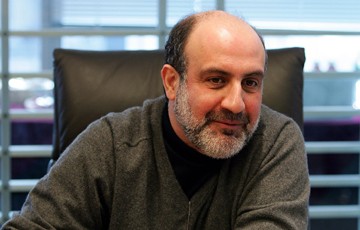
Thriving in uncertainty, blossoming in volatility, enjoying noise – that is being anti-fragile.
Taleb has written yet another peculiar book about randomness and nonlinearity. He invented a new word to describe the phenomenon that sometimes occurs – when there is a limited downside and a great upside to variation.
When there is a convex nonlinear effect – or a limit to losses – then the output will be better with more variability.
One (loathed) example is that of a corporate manager. The basic salary is good, whether the company makes money or loses money, but profit-sharing bonus can only be positive. If the company makes a small profit year-on-year, there is almost no bonus. However, a great profit one year followed by a loss-making year will give at least one year’s full bonus payment. Much better for the individual corporate manager. He/she benefits from variability and noise. The more, the better – at least on short term.
Taleb shows that the banking industry as a whole operates in a similar way. When there are “good years”, profits are distributed to the owners. When the banks collapse, the tax-payers take the bill. Therefore, the banking sector as a whole enjoys variability and encourages this chaos.
The problem is of course that these patterns destroy other areas in society.

In my view, Taleb’s main contribution is to make the patterns visible and to give names to the phenomena. He builds a simplified nonlinear dynamic framework in which we can discuss these systemic patterns. We need to understand the structures to make good decisions in designing new and better systems.
Dynamic phenomena are difficult to understand, and this book is an important contribution. I also recommend “Limits to Growth” and “The 5th Discipline”. 
The two examples above are win-lose systems, but that is not necessary. We can design win-win structures that benefit from the natural disorder of things. We can challenge the established organizational patterns using the concept of anti-fragility and re-invent the way we work together.
One way of increasing robustness and aiming for anti-fragility is to ensure that all players in a structure have a personal stake – skin in the game. To quote Fat Tony, one of the colorful characters of the book, “Only get on a plane if the pilot is on the plane”.









